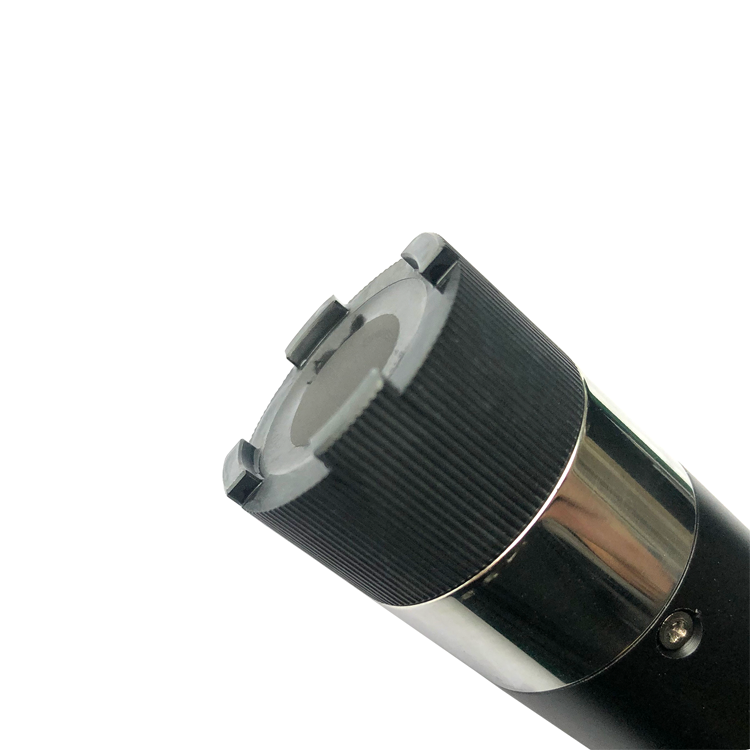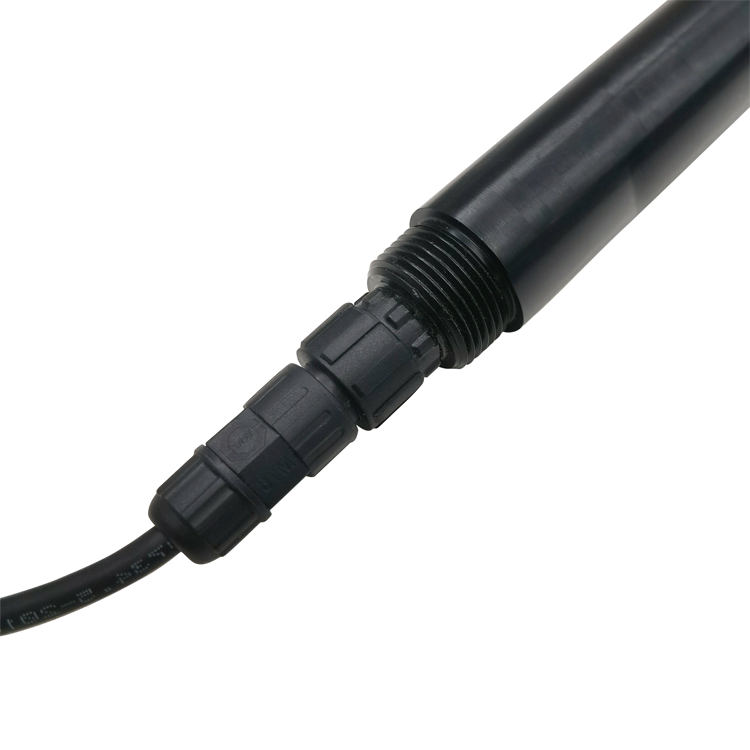

— Blogs —
—Products—
 Consumer hotline +8618073152920
Consumer hotline +8618073152920 WhatsApp:+8615367865107
Address:Room 102, District D, Houhu Industrial Park, Yuelu District, Changsha City, Hunan Province, China
Product knowledge
Time:2025-10-29 17:33:13 Popularity:386
Dissolved oxygen (DO) is a key indicator of water body health and biological activity, directly related to aquaculture, sewage treatment, and ecological monitoring.
- Aquaculture: Low DO can cause fish hypoxia, stress, or even death; high DO helps increase stocking density and production efficiency.
- Sewage Treatment: DO levels affect the aerobic decomposition efficiency of activated sludge; controlling aeration optimizes energy consumption and treatment effects.
- Environmental Monitoring: DO levels in rivers, lakes, and reservoirs are important references for ecological health and water self-purification capacity.
Insufficient dissolved oxygen can lead to biological death, increased odors, and accumulation of harmful substances, impacting yields and water environments. Effective DO monitoring is crucial for ensuring water quality, optimizing operations, and reducing costs.
Principle: Utilizes fluorescence quenching technology. Oxygen molecules interact with fluorescent dyes on the sensing membrane, attenuating fluorescence intensity, which is then converted to dissolved oxygen concentration.
Features of Optical DO Meters:
- No electrolyte required, long-term stability.
- Fast response time and high accuracy.
- IP68 waterproof rating, suitable for prolonged immersion in water.
Technical Advantages:
- Unaffected by bubbles.
- Simple maintenance, requiring only periodic cleaning of the sensing membrane.
- Integrable with IoT systems for remote monitoring.
Includes galvanic electrode and polarographic types.
Principle: Oxygen molecules are reduced at the electrode surface to produce current, with the current magnitude proportional to the dissolved oxygen concentration.
Features of Electrochemical DO Meters:
- Suitable for high-concentration or highly variable water bodies.
- Outputs linear current signals (4–20 mA) for easy integration with industrial automation.
- Accuracy typically ±0.2 mg/L.
Technical Advantages:
- Sensitive to low-temperature water bodies.
- Applicable to sewage treatment, chemical water circulation, and other high-pollution water environments.
- Requires periodic replacement of electrolyte and membrane.

- Air-Saturated Water Calibration: Immerse the probe in air-saturated water or use calibration solution to ensure accurate zero and full-scale points for the sensor.
- Two-Point Calibration: Optional low point (zero-oxygen water) and high point (air-saturated water) calibration for improved accuracy.
- Frequency: Calibrate every 2–4 weeks; more frequently in special environments.
- Probe Cleaning: Prevent algae, sediment, and fouling from adhering and affecting readings.
- Membrane and Electrolyte Replacement: Electrochemical DO meters require regular changes to ensure measurement accuracy.
- Bubble Interference Prevention: For optical DO meters in high-bubble water bodies, adjust the installation angle.
Objective: Maintain DO >5 mg/L.
Measures: Optical DO sensors + IoT control of aerators for automatic oxygen regulation in water bodies.
Effects: Reduce fish stress and mortality, increase stocking density and yield.
Real Case:
Vietnam Shrimp Farm: Solar-powered IoT DO station with 2 sensors per pond, real-time data upload to the cloud, automatic aerator start/stop. Energy consumption reduced by 20%, shrimp mortality decreased by 15%.
Objective: Maintain appropriate DO levels in aerobic tanks to enhance organic decomposition efficiency.
Measures: Electrochemical DO meters combined with PLC/SCADA for intelligent aeration control via blowers.
Effects: Reduce energy consumption, improve treatment efficiency, and extend blower lifespan.
Real Case:
Guangdong Sewage Treatment Plant: Niubol electrochemical DO meters installed in 50 m³/h aerobic tanks, linked to PLC for blower DO regulation. After six months, energy consumption decreased by 12%, water treatment efficiency improved by about 8%.
- Water quality monitoring in rivers, lakes, and ports.
- Optical DO sensors with IP68 waterproofing for prolonged water immersion.
- Remote IoT platforms for real-time collection and analysis of water body oxygen levels.
Niubol DO meters can be deeply integrated with IoT platforms:
- Real-time remote monitoring of DO concentrations.
- Historical trend analysis and report generation.
- Automatic control of aerators or circulation pumps.
- Abnormal DO value alarms (SMS/App/email).
- Cloud-based centralized management of multiple aquaculture ponds or treatment stations.
Communication methods support LoRa, Wi-Fi, and 4G; some models support solar power, suitable for remote farms or field monitoring.
Typically every 2–4 weeks, adjusted based on water environment and usage frequency.
Yes, Niubol optical DO probes are IP68 waterproof, suitable for continuous submersion.
About 6–12 months, depending on water pollution levels and usage frequency.
Yes, outputs analog signals (4–20 mA) directly connect to PLC/DCS for intelligent control.
Supports IoT cloud platform for centralized management, real-time display of multiple pond DO values for remote decision-making.

Dissolved oxygen meters are core tools for water quality management, essential for aquaculture, sewage treatment, and environmental monitoring.
Niubol provides a full range of solutions from optical to electrochemical DO meters, combined with IoT remote monitoring and intelligent control, achieving:
- Aquaculture Optimization: Reduced mortality, increased yields.
- Sewage Treatment Energy Savings: Intelligent aeration, lower energy use.
- Reliable Environmental Monitoring: Real-time data supporting ecological protection.
Niubol — The Best Choice for Precise DO Monitoring and Intelligent Water Quality Management.
Prev:Understanding Liquid Level Sensors and Their Industrial Applications
Next:How to Choose the Right Water Flow Meter for Your Application
Related recommendations
Sensors & Weather Stations Catalog
Agriculture Sensors and Weather Stations Catalog-NiuBoL.pdf
Weather Stations Catalog-NiuBoL.pdf
Related products
 Combined air temperature and relative humidity sensor
Combined air temperature and relative humidity sensor Soil Moisture Temperature sensor for irrigation
Soil Moisture Temperature sensor for irrigation Soil pH sensor RS485 soil Testing instrument soil ph meter for agriculture
Soil pH sensor RS485 soil Testing instrument soil ph meter for agriculture Wind Speed sensor Output Modbus/RS485/Analog/0-5V/4-20mA
Wind Speed sensor Output Modbus/RS485/Analog/0-5V/4-20mA Tipping bucket rain gauge for weather monitoring auto rainfall sensor RS485/Outdoor/stainless steel
Tipping bucket rain gauge for weather monitoring auto rainfall sensor RS485/Outdoor/stainless steel Pyranometer Solar Radiation Sensor 4-20mA/RS485
Pyranometer Solar Radiation Sensor 4-20mA/RS485
Screenshot, WhatsApp to identify the QR code
WhatsApp number:+8615367865107
(Click on WhatsApp to copy and add friends)
